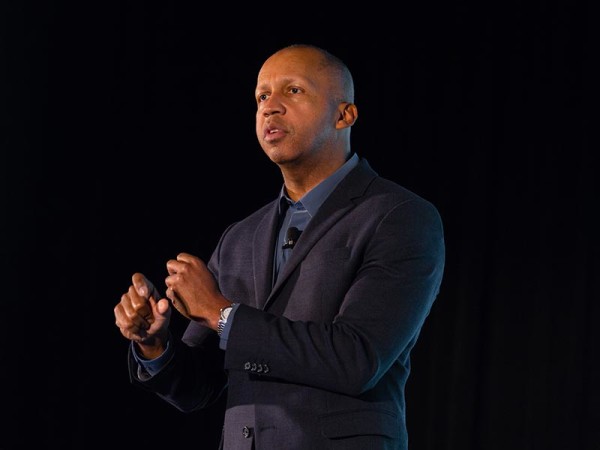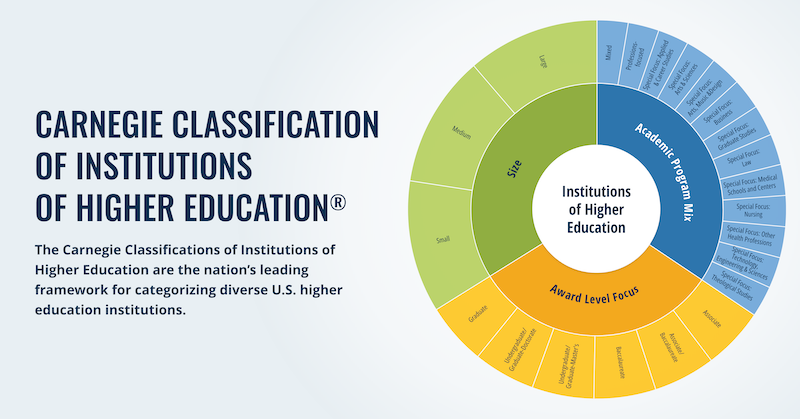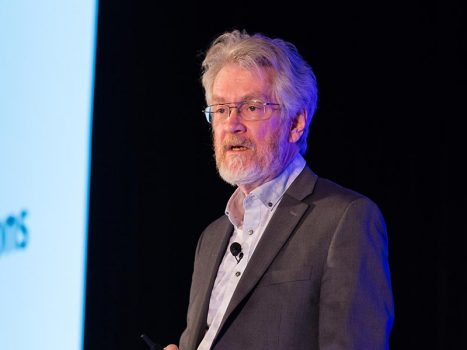Editors’ Note: This is the third blog post in our series featuring reflections on and learnings from the 2016 Carnegie Foundation Summit on Improvement in Education. Each post provides recaps of sessions you may have missed and further insight into presentations you may want to revisit.
This year’s Carnegie Foundation Summit on Improvement in Education was drawn to a close by an incredibly moving keynote by Bryan Stevenson, founder and executive director of the Equal Justice Initiative.
Stevenson began by giving powerful evidence of the grave issues of equity in our society: 1 in 3 black male babies will go to jail or prison in their lifetime, and 70% of women in prison are single parents, meaning that their children are displaced as a result of their mothers’ imprisonment. He also said that 30% of black men in Alabama have permanently lost the right to vote, a particularly problematic statistic given the impact that political marginalization can have on groups of citizens. After presenting these painful statistics, Stevenson gave voice to the question that I, and surely the rest of the audience was thinking: How can we do better?

Given his decades of experience fighting poverty and challenging discrimination in the criminal justice system, Stevenson shared his insights for working towards equity with the Summit audience:
- We must get “proximate” to suffering and understand the nuanced experiences of those who suffer from and experience inequality. Stevenson believes that “if you are willing to get closer to people who are suffering, you will find the power to change the world.”
- We must change the narratives that sustain problems. Narratives that fail to acknowledge or accurately portray the reality of inequality only serve to perpetuate it. Stevenson referenced the politics of fear and anger that led to “zero tolerance” policies and armed officers in schools that promote a narrative that students in schools are criminals to be punished rather than children to be taught.
- We must stay hopeful about what we can do to end injustice.
- We must be willing to do things that are uncomfortable. Stevenson observed that fighting—sometimes in vain—for the rights of some of the most downtrodden members of society can feel uncomfortable. However, there is restorative power in doing so. Through his often-heartbreaking work, he has realized that he is committed to working for equality not only because he wants to fix a broken system, but because he recognizes his own brokenness in the brokenness of those he serves.
“You cannot be an effective problem-solver from a distance. There are details and nuances to problems that you will miss unless you are close enough to observe those details.”
While every point Stevenson made was compelling and motivating, I was particularly struck by his first point of being proximate to suffering. Clearly, he is promoting something similar to the first improvement principle: “Be user-centered and problem-specific.” In improvement work, we know the importance of engaging front-line workers in order to deeply understand the problems we are trying to solve. As Stevenson explained in his keynote, “You cannot be an effective problem-solver from a distance. There are details and nuances to problems that you will miss unless you are close enough to observe those details.”
Because user-centeredness is such a priority for improvement work, there are a variety of strategies we use to understand the user’s perspective. One strategy is an empathy exercise in which the improvers engage in the “lived experience” of some problem. For example, in a recent project to improve the instructor notes (or insertions in the lesson plans for those who are teaching in the Pathways) that support the curriculum in the Carnegie Math Pathways networked improvement community, researchers at the Carnegie Foundation used the existing instructor notes to prepare for and teach a community college math class themselves. Through this experience, and as Stevenson would have predicted, nuances of the faculty experience began to emerge. For example, from a curriculum writer’s perspective, it made sense to embed the notes for instructors within the text that students read. However, when teaching the lesson, the researchers found it challenging to point students to the correct page when the instructor and student page numbers were not the same. A clever design feature easily remediated this difficulty. It is a small thing, but one that only became apparent when the team truly empathized with the user.
There are also other strategies to understand those on the front lines: shadowing users and conducting user interviews can also help us more deeply empathize and come closer to those experiencing the problem we are trying to solve. Those people can also be included as members of the core improvement team to more regularly capture their expertise and knowledge. Improvement teams in education often consist not only of principals and researchers but also of teachers and even students.
Improvement science (and the methods that it employs) by its very nature is concerned with the social issues of differential performance for groups of students.
However, I believe Stevenson’s vision of “getting proximate to suffering” goes even further than just contributing to solving problems. For Stevenson, it is also to promote associations that have intrinsic value in and of themselves. Stevenson spoke of his own experience as a law student meeting a death row prisoner for the first time. He had been sent to share one simple message from the other lawyers: that this prisoner was not at risk of being executed in the next year. Relieved, the prisoner explained that he had been afraid to see his family for fear that he would have an execution date and did not want them to have to deal with it. But now, with this simple information from Stevenson, he felt comfortable seeing his family for the first time in two years. Reflecting on this experience, Stevenson noted, “I couldn’t believe that just being proximate could have such an impact on the quality of someone’s life.” Stevenson reminded us that being proximate and user-centered is not just a means to designing better processes and products. It can have an impact in and of itself; it redefines relationships, and not just for those who are experiencing suffering but for those of us who seek to end it.
In the second principle of improvement, we are urged to attend to variability in the system. More specifically, it states: “Variability in performance is the core problem to solve.” This means that improvement science (and the methods that it employs) by its very nature is concerned with the social issues of differential performance for groups of students. As a community of improvers, we should be dedicated not only to user-centeredness but also to social justice, and as a result we must focus not only on the tools and strategies for empathy but also on the human implications of differential performance and the ways that proximity can alleviate them. The ultimate goal of any improvement should be an education system that reliably serves every student, especially those whom it has traditionally underserved. Certainly, user-centeredness is a means to an end: a helpful strategy for solving problems in education. What Stevenson reminds us is that our user-centeredness is more than a buzzword—it is a human connection. Empathy needs to be not just a step in the process but a personal relationship that truly changes everyone involved.
April 18, 2016
At the 2016 Carnegie Summit, Alex “Sandy” Pentland shared his research in the field of social physics that can help us understand the relationships between human behavior, collective experience, and the spread of ideas.
May 2, 2016
At the Carnegie Summit, Hahrie Han shared insights from her research on participation and activism. One of the big questions she addressed is, how can we best mobilize people to work toward change together?







